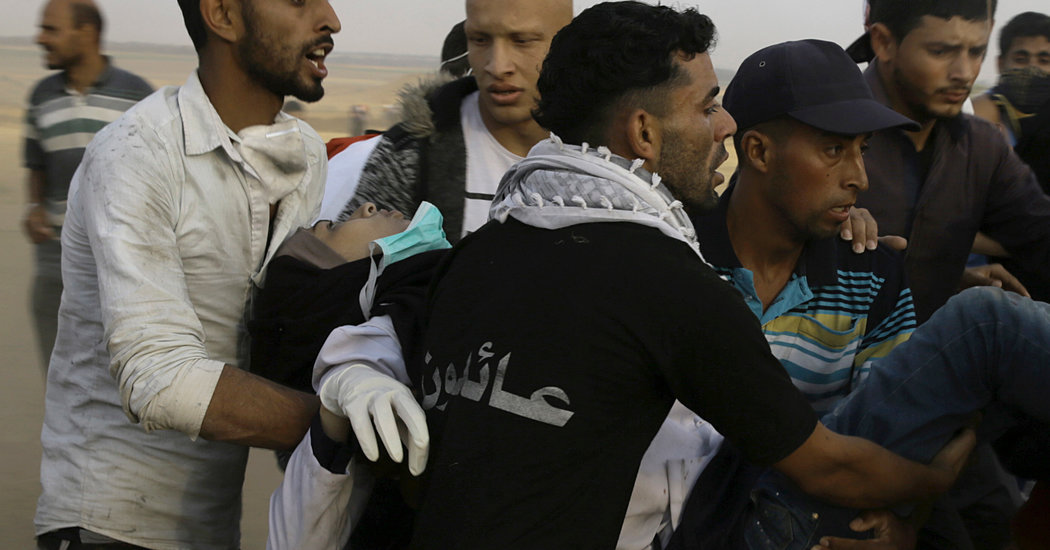Mistakes Add Up
A senior Israeli commander told The Times in August that 60 to 70 other Gaza protesters had been killed unintentionally, around half the total killed at that point.
Yet the Israeli army’s rules of engagement remain unchanged, the military says.
That alone may constitute a separate violation of international humanitarian law, experts say: After enough civilians have died, commanders have a duty to make changes to ensure that they aren’t needlessly targeted.
“You lose the right to say, ‘Oops,’” said Noam Lubell, a professor of the law of armed conflict at the University of Essex.
The large number of accidental killings, and Israel’s failure to adjust the rules of engagement in response, raise the question of whether they were a bug or a feature of its policy.
Colonel Conricus said that not all those killed unintentionally had been shot unintentionally. Sometimes soldiers had aimed at the legs of people they considered to be legitimate targets, he said, but killed them instead of wounding them.
Israel considers members of Hamas fair game whether they are armed or not, an interpretation of international law that is not universally accepted.
Colonel Conricus also said the rules of engagement were merely an upper limit on the use of force, and that the army was doing other things, such as training troops when they are first assigned to the fence, to curb civilian casualties.
Israeli military lawyers conceded there had been some misconduct but said that no soldiers were suspected of intentionally killing anyone they knew they shouldn’t have.
On Oct. 29, nearly five months after she was killed, Israel’s military advocate general began a criminal investigation of Ms. Najjar’s death.
But the senior commander told The Times in August that no recordings of the shooting from the Israeli side existed. He had no idea exactly when Ms. Najjar had been shot. He learned that from The Times.
Israel seems content to say that protecting its border is a messy business. “Unfortunately, yes,” said Colonel Conricus, “in a situation like that, accidents happen, and unintended results happen.”
6:37 p.m.
An ambulance races Ms. Najjar to a triage tent, where she is deposited in the “red zone” for trauma cases.
She had wanted so badly to belong here that she used to visit the tent often, even when she was not escorting patients. Now, the professionals crowd around frantically trying to save her. The doctor who intubates her is the same one who administered the Health Ministry exam she aced back in April.
Three people record the scene on smartphones, a reminder of her celebrity.
Ms. Najjar takes her last breath even before she is rushed to a nearby hospital, where she is pronounced dead at 7:10 p.m.








